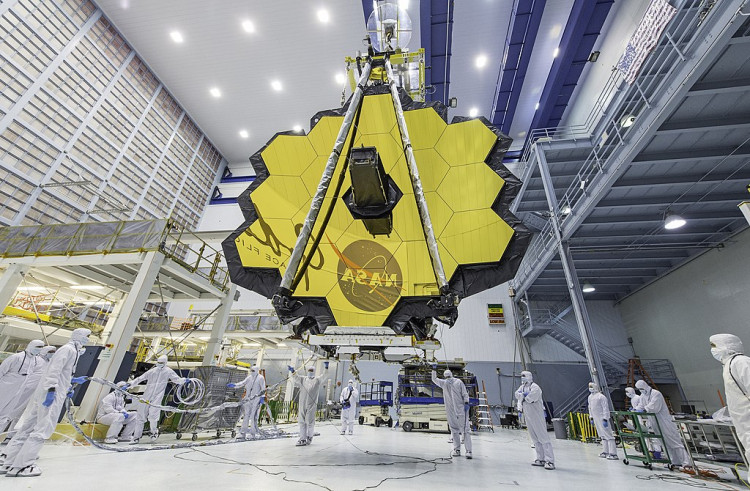According to a NASA report, one of the 18 golden segments of the James Webb Space Telescope's (JWST) giant mirror was struck by a micrometeoroid in May. However, NASA says the space observatory is still on track to release its first high-resolution, full-color images on July 12.
A micrometeoroid is a particle in space that is smaller than a grain of sand. According to NASA, millions of meteoroids and micrometeoroids hit the Earth's atmosphere on a regular basis, but the vast majority of them are annihilated.
However, because spacecraft lack a protective bubble of atmosphere, avoiding these hits is nearly impossible.
"With Webb's mirrors exposed to space, we expected that occasional micrometeoroid impacts would gracefully degrade telescope performance over time," Lee Feinberg, Webb optical telescope element manager at NASA's Goddard Space Flight Center in Maryland, said in the statement.
"Since launch, we have had four smaller measurable micrometeoroid strikes that were consistent with expectations, and this one more recently that is larger than our degradation predictions assumed."
The Webb telescope was hit between May 23 and 25, but "despite a marginally detectable effect in the data," the Webb team says, "the telescope is still performing at a level that exceeds all mission requirements."
The crew is still investigating what happened and how it may have impacted the telescope's performance. It's also anticipated to be the first of many similar encounters for Webb during its mission in space.
JWST, like any spacecraft, is expected to encounter and be equipped to endure micrometeoroid impacts. Engineers at the observatory even put mirror samples through real hits to see how they would affect the mission's findings.
According to the statement, the current impact was greater than those that mission personnel had modeled or could test on the ground.
Despite the fact that the incident occurred so early in the observatory's life, NASA officials are confident that the $10 billion telescope will continue to function properly.
Furthermore, JWST launched with its optics in better form than the agency had anticipated, according to authorities.
NASA is working with the JWST team to better understand both the specific event and the environment that the observatory will encounter throughout its mission.
The telescope is orbiting the Earth-sun Lagrange point 2, which is about 1 million miles (1.5 million kilometers) away from Earth in the opposite direction of the sun, according to astronomers.



